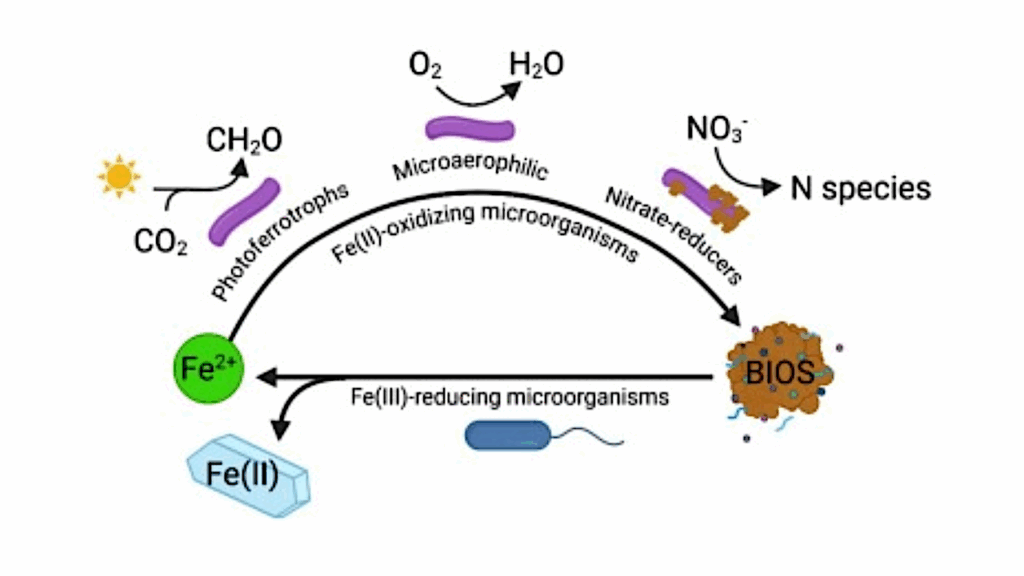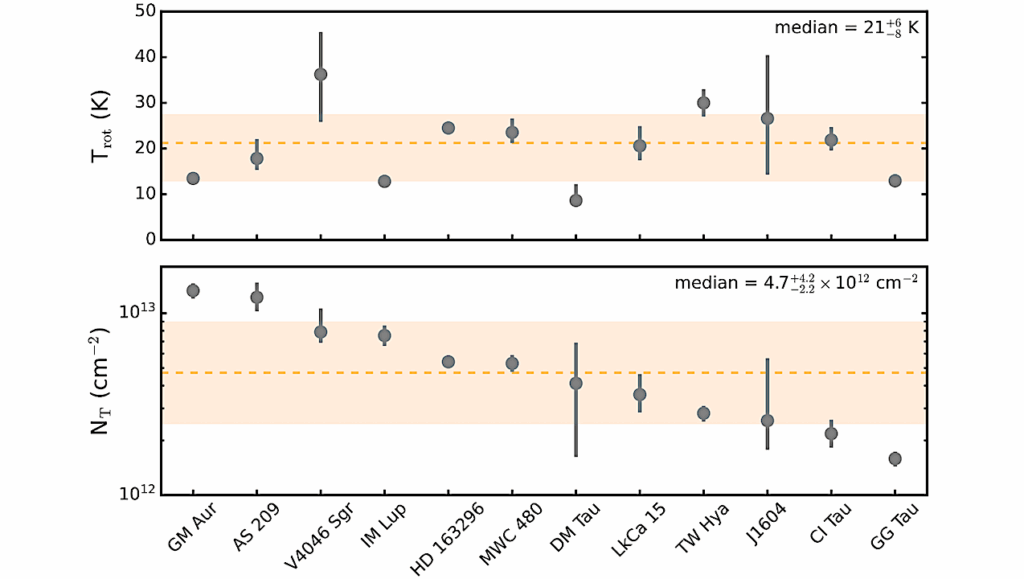A Deep Search for Five Molecules in the 49 Ceti Debris Disk

Surprisingly strong CO emission has been observed from more than a dozen debris disks around nearby main-sequence stars. The origin of this CO is unclear, in particular whether it is left over from the protoplanetary disk phase or is second-generation material released from collisions between icy bodies like debris dust.
The primary unexplored avenue for distinguishing the origin of the material is understanding its molecular composition. Here we present a deep search for five molecules (CN, HCN, HCO+, SiO, and CH3OH) in the debris disk around 49 Ceti.
We take advantage of the high sensitivity of the Atacama Large Millimeter/submillimeter Array (ALMA) at Band 7 to integrate for 3.2 hours at modest spatial (1″) and spectral (0.8 km/s) resolution. Our search yields stringent upper limits on the flux of all surveyed molecular lines, which imply abundances relative to CO that are orders of magnitude lower than those observed in protoplanetary disks and Solar System comets, and also those predicted in outgassing models of second-generation material. However, if CI shielding is responsible for extending the lifetime of any CO produced in second-generation collisions, as proposed by Kral et al. (2018), then the line ratios do not reflect true ice phase chemical abundances, but rather imply that CO is shielded by its own photodissociation product, CI, but other molecules are rapidly photodissociated by the stellar and interstellar radiation field.
Jessica Klusmeyer (Wesleyan, NOIRLab), A. Meredith Hughes (Wesleyan), Luca Matra (CfA, NUI Galway), Kevin Flaherty (Williams), Agnes Kospal (Konkoly, MPIfA), Attila Moor (Konkoly), Aki Roberge (NASA-GSFC), Karin Oberg (CfA), Aaron Boley (UBC), Jacob White (NRAO, Jansky Fellow), David Wilner (CfA), Peter Abraham (Konkoly)
Comments: 26 pages, 4 figures, 4 tables, accepted for publication in ApJ
Subjects: Solar and Stellar Astrophysics (astro-ph.SR); Earth and Planetary Astrophysics (astro-ph.EP)
Cite as: arXiv:2107.07435 [astro-ph.SR] (or arXiv:2107.07435v1 [astro-ph.SR] for this version)
Submission history
From: A. Meredith Hughes
[v1] Thu, 15 Jul 2021 16:28:44 UTC (4,277 KB)
https://arxiv.org/abs/2107.07435
Astrobiology, Astrochemistry,








